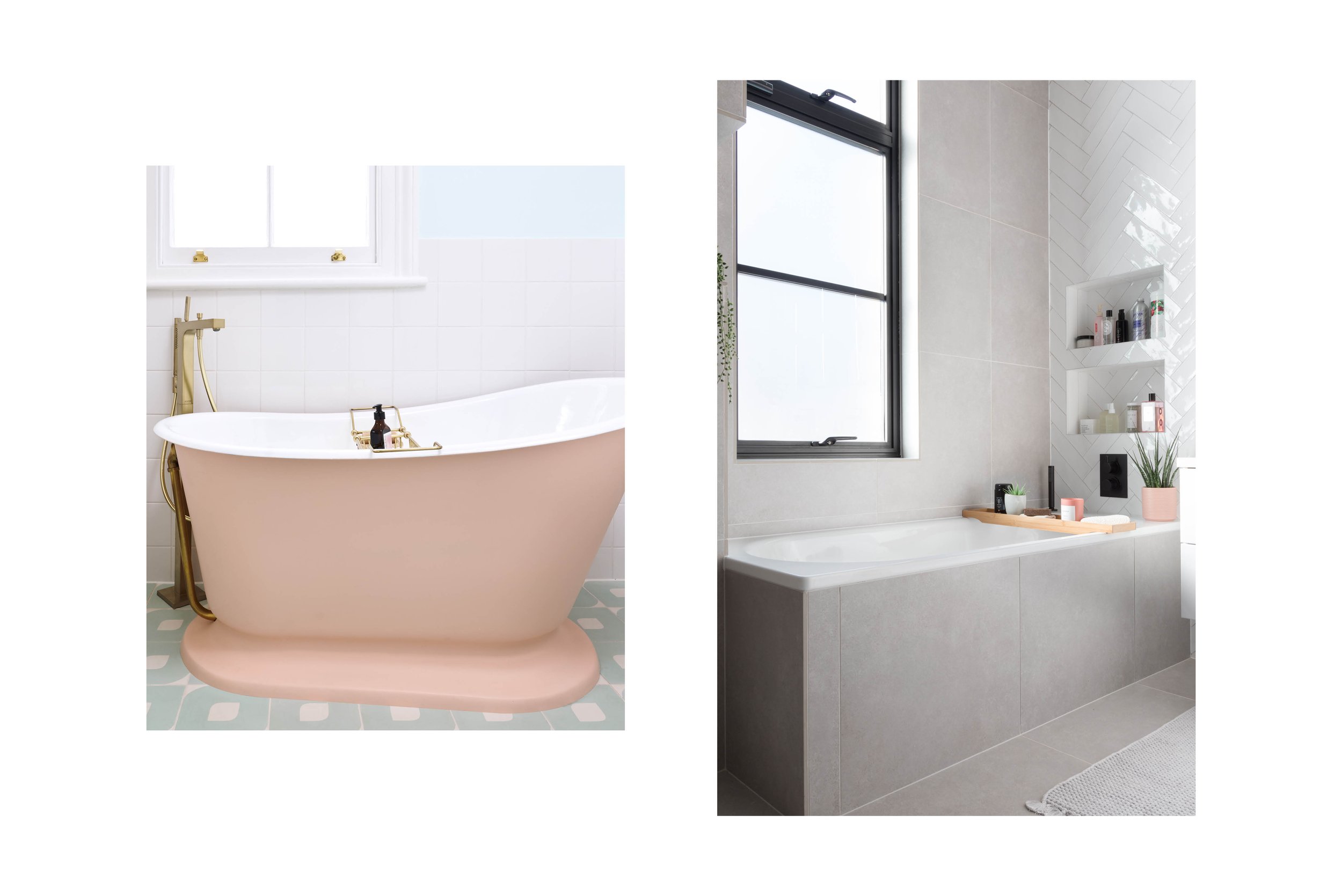How to: Choose a bath for your bathroom or ensuite
Picking out a new bath for the bathroom or ensuite means considering practical elements as well as shape and style. To help you determine which is best for you, we asked Jo, Senior Designer from Ripples London, to share her top tips and advice.
Whether it’s for the family bathroom or a luxurious ensuite, a long soak in a hot bubble bath is the ultimate treat at the end of a long day. Create a soothing sanctuary with a spa-like design, make an impact with a statement tub or enhance a smaller space with a dual function shower bath. We’ve got all the ideas and inspiration you need, along with practical advice to help you make the right choice.
Style and shape
Usually, the size and layout of your bathroom will determine the shape of the bath. A freestanding tub makes a statement with a luxurious boutique hotel look but it does need enough space around it as well as a freestanding bath/shower mixer or wall-mounted tap if the bath is set against a wall. Inset baths on the other hand tuck neatly against the wall and are ideal for smaller bathrooms and compact ensuites. Bear in mind that replacing like for like will be more cost-effective than changing the layout and plumbing so consider this if you have a budget to stick to.
Period properties are ideal for freestanding roll-top, bateau or slipper tubs, especially those with claw feet. Elegant and timeless, these baths add instant wow factor to the bathroom and are on the top of many buyers’ wish list when looking for a new home. As they are raised up on feet, they can also make a smaller space feel larger.
For a contemporary feel, choose a curvaceous or angular freestanding design in a crisp white composite. Elliptical and pebble shapes are clean-lined and fuss-free, perfect for a minimalist look. Inset baths come in rectangular or D, L or P shapes for over-bath showering and have the option of being single or double ended. If you want the choice of lying at either end, have a tall family member or will be bathing the children, a double ended with tap and waste in the centre is more practical.
Material matters
It’s important to consider what the bath is made of, as this will determine how well it retains the heat and how easy it is to clean. Acrylic is the budget-friendly option, which is also lightweight and easy to install. It comes in a wide choice of shapes and styles with pre-drilled holes for deck-mounted taps. Make sure you go for a quality design, as cheaper models tend to scratch easily.
Steel baths are extremely durable and hardwearing and are popular for built-in designs. They stand up well to over-bath showering and are ideal for families, as they cope well with stains, scratches and plenty of everyday use. They also retain heat well so you won’t need to keep topping up the hot water when having a long soak.
Traditional roll-tops are usually made from cast iron and they are hardwearing and easy to clean, as well as retaining heat well. They do tend to be heavy however so always check if the floor needs reinforcing before installation.
For a modern look, composite and solid stone models come in gloss or matt finishes and can be moulded into sleek shapes with soft curves or rounded edges for a contemporary feel.
Whichever material you prefer, think about how easy it is to clean and for a really hygienic surface, ask about antibacterial finishes that repel dirt, germs and bacteria.
Finishing touches
Once you’ve selected the style, shape and material, next comes the final flourish – the finish or bath panel to make your tub complement or contrast with your bathroom décor.
Both cast iron and acrylic can be painted in modern eggshell, estate eggshell or full gloss. Choose a vibrant shade for a focal point or go for something muted and neutral for a chic and sophisticated feel. Painted finishes look particularly stunning on a freestanding roll-top, bateau or slipper style.
Straight or shower baths and built-in designs need a bath panel. These conceal the pipework underneath as well as waterproofing to minimise any damage from water splashes. You can tile a backerboard or plasterboard to match a tiled wall or floor or opt for a wooden design that could be painted to complement the bathroom’s décor. Acrylic panels can be left untreated or painted with specialist paint and for added impact, feature lighting creates wow factor and helps to brighten a dark space.
For more bathroom advice from our team of specialist bathroom designers, download or request a copy of our free Style Guide.
Want to find out where to start when it comes to re-designing a bathroom? Read our expert advice with helpful information on every part of the project.






